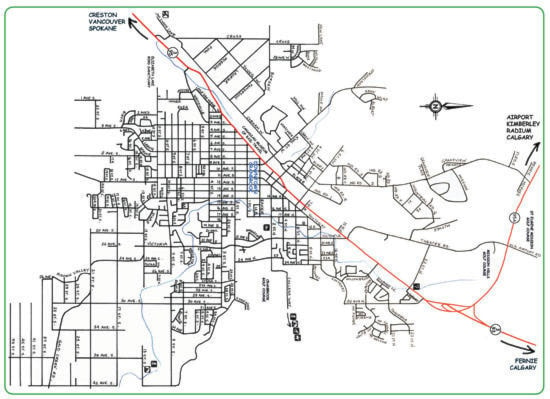I was thinking about the immense changes I’ve seen in Cranbrook in the almost 20 years I’ve lived here (I arrived in town the same month as the Kootenay Ice, for starters).
Changes to the economic base — like the shutdown of the sawmill, the Sullivan Mine in Kimberley, the changing faces of the businesses downtown, the advent of the “big box” stores in the north of town. The way the population has changed. The different ways we now drink beer and coffee, and buy clothes. The local media landscape, including the newspaper industry, has seen profound changes.
The list is endless. A fun thing to do is make your own list, and see how you fit into it — that way you can see how you yourself have changed.
What is the one thing that has not changed in the almost 20 years since I first came to Cranbrook — and in fact a lot longer than that? The empty space in the middle of town where a grocery store used to be.
The building is still there, echoey and lifeless, sitting in the absolute metaphorical and literal centre of Cranbrook. El primo real estate — the Ground Zero of the East Kootenay.
While most of Cranbrook’s historical heritage, its great works of architecture, have disappeared, through acts of the gods or acts of humans, this one lives on, dead as a doornail.
While other towns like Nelson or Kimberley, which being built on mountain slopes have limited possibilities to expand outwards, reuse their old buildings in creative ways, this one building sucks the energy out of our downtown without our even realizing it, like an invisible black hole, or the empty space in my heart.
Oh, I know — there’s nothing to be done. There it sits, and that’s just the way it is. And it’s not as if this empty eyesore of an economic liability is doing me any harm. It doesn’t haunt my dreams the way the vanished ghost town in the middle of the prairies near where I grew up does.
Still, I am one who believes that architecture is important. It is the art form that defines our community, and thus our sense of collective self — to put it simply. And I’m one who yearns for the Cranbrook of old, the architectural gem of southeast British Columbia with magnificent buildings like the Court House, the old post office, the St. Eugene Hospital — now all gone.
Now what defines us, architecturally, is a huge derelict right in the middle of town, that once a year, for a weekend at the beginning of winter, houses the indoor Farmer’s Market, but otherwise goes without notice. People avoid looking at it as they walk or drive by — the habit of more than a quarter century.
I’ve talked to many people over the years who have envisioned something else there, or have seen it in their minds’ eyes being put to use like Nelson or Kimberley would. A residential development for seniors; a Norco bicycle plant; headquarters for Teck; a velodrome; a permanent indoor market; a sculpture garden. Even a strip mall. Even a park. Even just four walls and a roof for an exhibition centre. Anything at all.
The subject of empty space in downtown Cranbrook has come up before. I hope that in the upcoming municipal byelection campaign, and next year in the full-on municipal election campaign, candidates for City Council will see fit to have this discussion again around unused space in key parts of our town.
